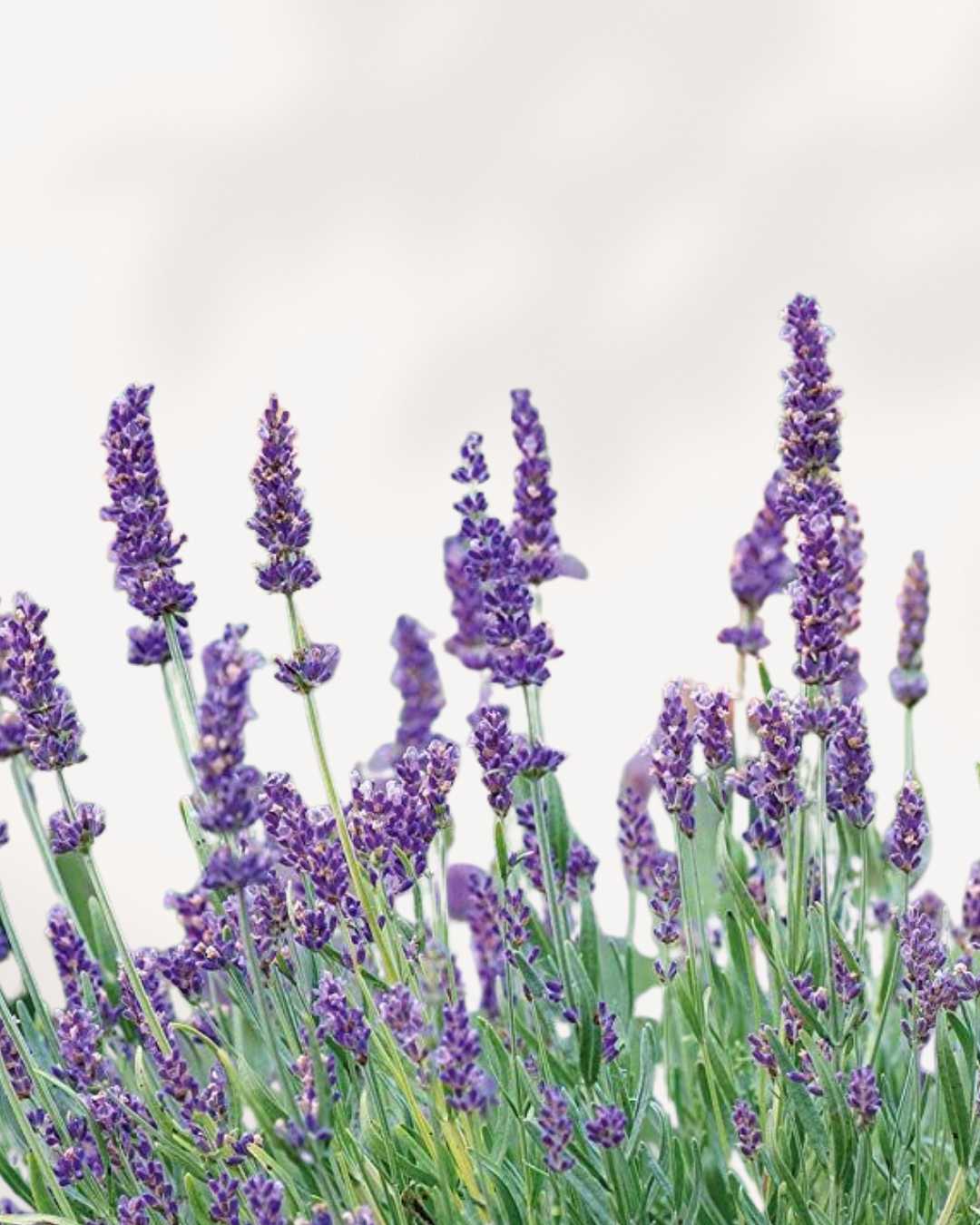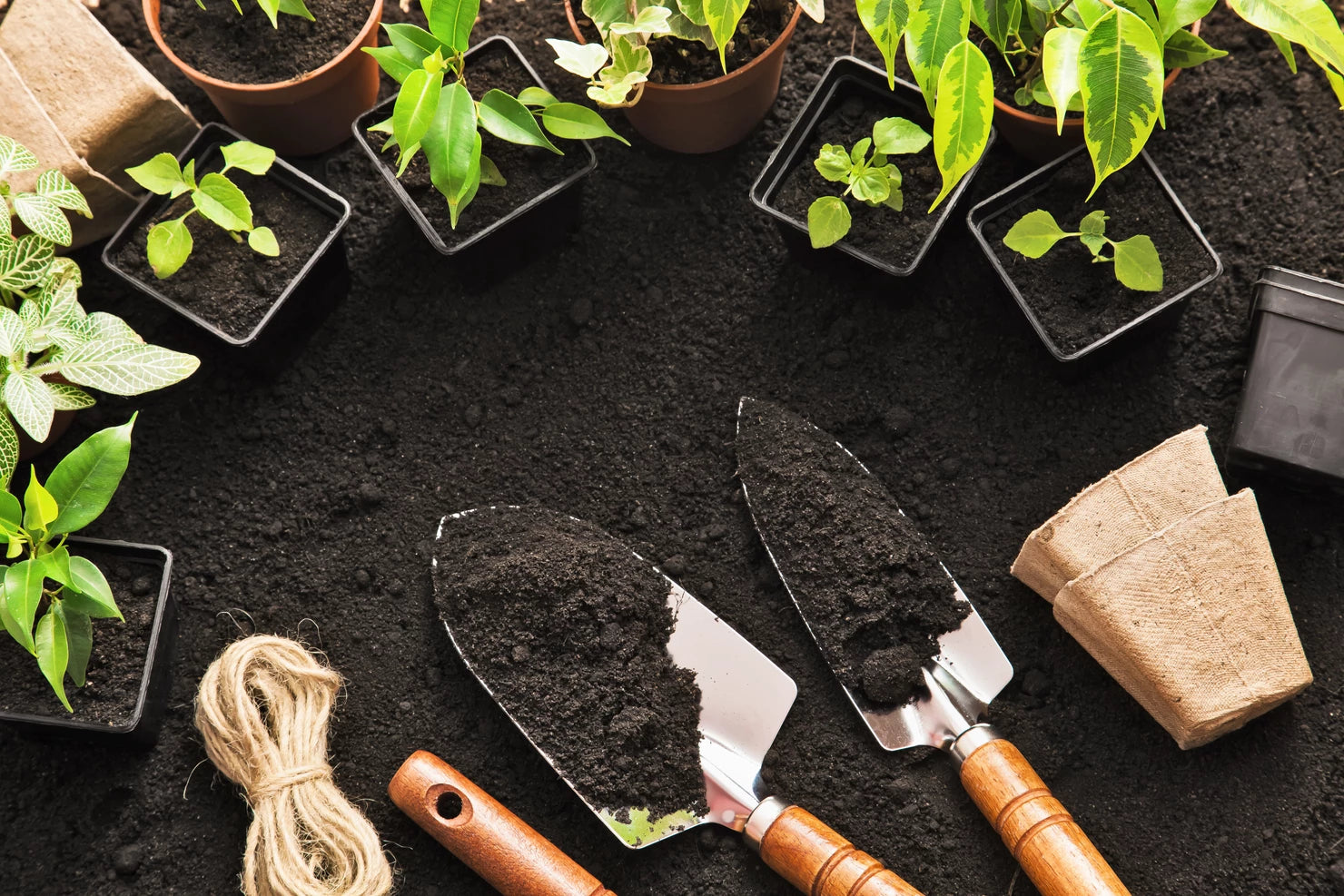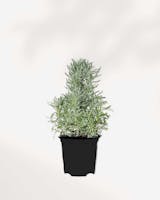Couldn't load pickup availability
Infuse Your Home with Tranquility: Welcome the Timeless Lavender Plant!
Imagine soft breezes carrying the intoxicating scent of summer through your home, melting away stress and inviting calm. The **Lavender Plant** (*Lavandula*) brings this dream to life! More than just a beautiful herb with its delicate purple blooms and silvery-green foliage, Lavender is a sensory experience, cherished for its unmistakable aroma and soothing properties. Perfect for sunny windowsills, balconies, or herb gardens, this classic plant is a delightful addition that offers both visual charm and a profound sense of well-being. It's an easy-to-grow, fragrant companion that truly nourishes the soul.
Why the Lavender Plant is a Beloved Addition to Any Space
💜 **Experience Unmatched Natural Aroma**
Its iconic, calming fragrance fills your space with a fresh, herbaceous scent, creating an instant oasis of relaxation and peace.
✨ **Elegant Beauty & Serene Ambiance**
With its delicate purple flower spikes and soft, silvery-green leaves, Lavender adds a touch of rustic charm and tranquil elegance to any sunny spot.
🐝 **A Little Piece of Nature's Harmony**
If grown outdoors, it's a magnet for pollinators like bees and butterflies, contributing to local ecosystems and bringing buzzing life to your garden.
🎁 **The Perfect Gift for Wellness & Relaxation**
Give the gift of calm! A Lavender plant is a thoughtful and cherished present, symbolizing peace and offering both beauty and a soothing sensory experience.
All the Details You Need to Know
The Story Behind This Plant
Originating from the Mediterranean, Middle East, and India, **Lavender** (*Lavandula*) boasts a rich history, revered for millennia for its aromatic and medicinal properties. From Roman baths to ancient perfumery and modern aromatherapy, its soothing scent has graced countless cultures. There are many species and cultivars, each with unique nuances, but all share the unmistakable, cherished fragrance and beautiful purple blooms that have made Lavender a symbol of purity, calm, and devotion across the globe.
How to Keep It Happy
Lavender is a sun-lover and thrives with specific care to ensure its fragrant blooms. Here are some tips to help it flourish:
- **Light:** Absolutely requires full sun! Place it in the brightest spot you have, ideally receiving 6+ hours of direct sunlight per day. Insufficient light will result in leggy growth and fewer blooms.
- **Water:** Prefers well-drained soil and is drought-tolerant once established. Water thoroughly when the top 2-3 inches of soil are completely dry. Be very careful not to overwater, as this is its biggest enemy.
- **Humidity:** Prefers low to moderate humidity, so it's well-suited for drier indoor environments or outdoor planting in Canada's climate.
- **Soil:** Requires well-draining, somewhat sandy, or gravelly soil. It thrives in slightly alkaline to neutral soil pH. Good drainage is non-negotiable.
- **Temperature:** Hardy outdoors in many Canadian zones, but indoors, keep it in warm conditions during the day and it can tolerate cooler nights. Ensure good air circulation.
- **Feeding:** Generally, Lavender does not need much fertilizer, especially if planted outdoors. If potted, a very light, balanced fertilizer once in spring can be beneficial, but avoid over-fertilizing, which can reduce fragrance and flowering.
- **Pruning:** Prune after flowering to maintain shape and encourage new growth and more blooms next season.
What to Do About Pests
Lavender is generally quite pest-resistant due to its strong essential oils. However, occasionally some pests might appear, especially if conditions are stressful.
If you happen to spot any of these, check out our guides for quick help:
, Popular Plant Varieties
Explore more unique and intriguing plants that add character and beauty to your home and garden:
- Hoya Pubicalyx 'Silver Splash' - Features stunning, waxy leaves dappled with silver variegation and a beautiful vining form, a true collector's gem.
- Sansevieria 'Chanin' - A modern and architectural snake plant with an upright, compact shape and incredibly drought-tolerant care, perfect for minimalist styles.
- Sansevieria 'Yaya' - Known for its unique, almost succulent-like rosette growth, offering a distinct and compact architectural design ideal for desks and shelves.
- Cactus Mystery Box - For the adventurous plant lover, receive a surprise mix of beautiful, low-maintenance cacti to expand your unique collection.
Ready to Infuse Your Life with Lavender's Calming Essence?
Bring home the timeless beauty and soothing fragrance of the Lavender Plant. Click below to order yours and create an oasis of tranquility today!
How to take care of Lavender Plant
Sun: Indirect
Sun: Indirect
Light: Medium - Bright
Light: Medium - Bright
Water: When Mostly Dry
Water: When Mostly Dry
Humidity: Any
Humidity: Any
Pet Friendly: Caution
Pet Friendly: Caution
Pro Tip
Pro Tip
Delivery Policy for Plant Condition
Delivery Policy for Plant Condition
"I have only received part of my order. What to do?
No worries if you've only got part of your order! Our plants come from different nurseries and might arrive in separate shipments, typically 1-2 days apart. It's all part of ensuring your green friends reach you in top-notch condition!
If you do not receive the remaining packages within 48 hours contact support at info@mygreenscape.ca
What is the Life Time Support?
Absolutely! Lifetime support means you can count on us whenever you have questions or uncertainties about your plant. Whether you're puzzled by its behavior or just want to ensure it's thriving, we're here for you. Connect with us on Instagram @mygreenscapeto or shoot us an email at support@mygreenscape.ca.
When it comes to our guarantee for plants shipped with standard or express, rest assured that we offer a 30-day happy healthy plant guarantee on all such shipments. This ensures that your plants are covered for 30 days after delivery, giving you peace of mind regarding their condition. If you have any concerns within this period, feel free to reach out to us for assistance.
For further details, please visit our Local Delivery, Store Pickup, Standard Shipping Guide Page.
What to expect
What to expect
Your plant will arrive in a standard nursery pot, typically 0.5" - 1" smaller than the stated size to seamlessly fit into your chosen decorative pot. Washable Paper Planter Bags are available for separate purchase.
Just like nature intended, each plant is unique, showcasing natural variations in size, shape, and characteristics. Our commitment is to deliver a plant that closely resembles the one featured on our website, matching your chosen size, and with the potential to thrive happily in your home.
Frequently Asked Questions
Frequently Asked Questions
Certainly! If you're pondering about ordering plants online, you're not alone. We've compiled the most frequently asked questions. Check out our FAQ section here for quick answers! Happy planting!
Plant & Pot Size Chart
Plant & Pot Size Chart
Choosing the right pot size for your plants can be a daunting task, especially if you're new to gardening. But fear not! Our pot sizes chart can help you find the perfect match for your plants, ensuring they have enough space to grow and thrive. With our guide, you'll be able to confidently choose the right pot size and plant variety for your gardening needs.
Plant Pot Size Guide.

| Extra Small | 7-10 cm | 2.5 - 3 inches |
| Small | 11-12 cm | 3.5 - 4 inches |
| Medium | 14-17 cm | 5 - 6 inches |
| Large | 19-21 cm | 8 - 10 inches |
| Extra Large | 24-27 cm | 12 - 14 inches |
All sizes are specified in product details.
Your Complete Guide to Pot Sizes: What Size Should You Choose?

When selecting a pot for your plant, it's important to find the right size. But with all the different options out there, how do you know which one is best? We're here to help!
MyGreenscape's pot sizes chart is a great resource for finding your perfect fit. Our easy-to-read chart takes out all the guesswork and helps you quickly choose the right size for your plant.
Smaller pots are best for seedlings or small plants just starting out. These tend to be shallow but wide, allowing enough room for the roots of the young plant but not too much where they get overcrowded. Medium-sized pots are ideal when your plant has grown from its infancy and is ready for more space. These are deeper and wider than small pots, so that it can accommodate larger root systems - making sure your plant gets enough nourishment while still giving it breathing room. Large pots are top choice if you have an established plant in need of lots of space - think trees and large shrubs! The spacious depth and width allow plenty of room for deep root systems without struggling for air or light.
No matter what size you choose, MyGreenscape has got you covered, with our pot sizes chart guaranteeing you find the perfect fit every time!
Winter Shipping Protection
Winter Shipping Protection
We take extra care with each package during the colder months. For destinations experiencing cold weather, we provide insulated packaging and heat packs as needed to protect your plants from freezing temperatures. With Winter Shipping Protection, your plants are equipped to arrive safe and sound, even in winter’s chill.
Care Guide
Care Guide
Explore essential care tips. check out our Comprehensive Resource for Indoor Plant Care.





WATERING MADE EASY
Check soil moisture before watering and use a potting mix that drains well. It’s the secret to healthy, happy plants!
Hear From Happy Plant Parents.
Who have brought Mygreenscape plants into their homes.






















